I remember running along the beach right as the sun was coming up one morning, when I was on a trip to Daytona Beach, FL, and seeing a fisherman casting out a couple rods and putting them in rod holders. I was intrigued when I saw him cast one out and start twitching and reeling it in. At the time, I lived in north Alabama and hadn't learned to surf fish. I couldn't believe it but it looked like he was casting a topwater lure out from the beach! My experience with topwaters was strictly from a boat in a river, so it took me by surprise. I was floored when I saw the size of the snook he reeled in.
There are so many different lures you can use for surf fishing. The many categories include topwater lures, spoons, crankbait, twitchbait, imitation shrimp, imitation crab, and swimbaits. Among best surf fishing lures are the Berkley Johnson Weedless Spoon, Rapala Skitter Walk, and ACME Kastmaster. The Berkley Johnson Weedless Spoon should be rigged with a high quality swivel and mono line on heavy cover days, the Rapala Skitter Walk topwater lure should be used in calm water at dawn, and the ACME Kastmaster spoon can be used all day, everyday. Whenever you fish with artificial lures, remember that its not just the lure that'll catch the fish, you've got to do the right presentation as well. Read through to find out when to use different lures and how to action them.
It's common for fishermen new to beach fishing to wonder whether artificial lures work well in the surf. We wondered the same thing when we got started. After trying it out, we proved that as a general rule, topwater lures, crankbaits, twitchbaits, spoons, and soft plastics all work well at attracting a variety of fish species from the beach. Topwaters work great for snook and spanish mackerals, twitchbaits will catch redfish and speckled trout, and nearly any species will bite a spoon or soft plastic.
Topwater Lures
Fishing with topwater lures can be a particularly fun way to fish. You'll cast it out, reel it back in with a strategic method, and you can literally WATCH the fish snatch it since they have to come to the surface to grab the lure. Fish are explosive when they bite topwaters and it creates a stark contrast to the calm and tranquil waters you're fishing them on. To get a piece of the topwater action, what conditions should exist?
Topwater lures are best used first thing in the morning or last in the evening. Topwaters are best used in shallower waters and during these timeframes, the shallow water is still cool in temperature. Red drum, black drum, and snook all prefer the cooler water and will head towards deeper water during midday. You'll also have best luck when the water is smooth and calm, so look for moments early in the morning when the surf is mild and cast just beyond the waves.
There are a few different types of topwater lures: walking types, propeller types, and popping types. The walking types dart back and forth across the water as if you were walking a dog. The propeller types create a wake behind them which attracts the fish, and popping types which creates a specific water pattern from a surface breach. All three of them are good to have in your arsenal of lures and we have recommendations in each category. As with all topwater lures, you must not pair it with a fluorocarbon leader. This is because fluorocarbon tends to sink, which pulls the front of the lure down into the water preventing it from being used as designed. Monofilament or braid will work just fine.
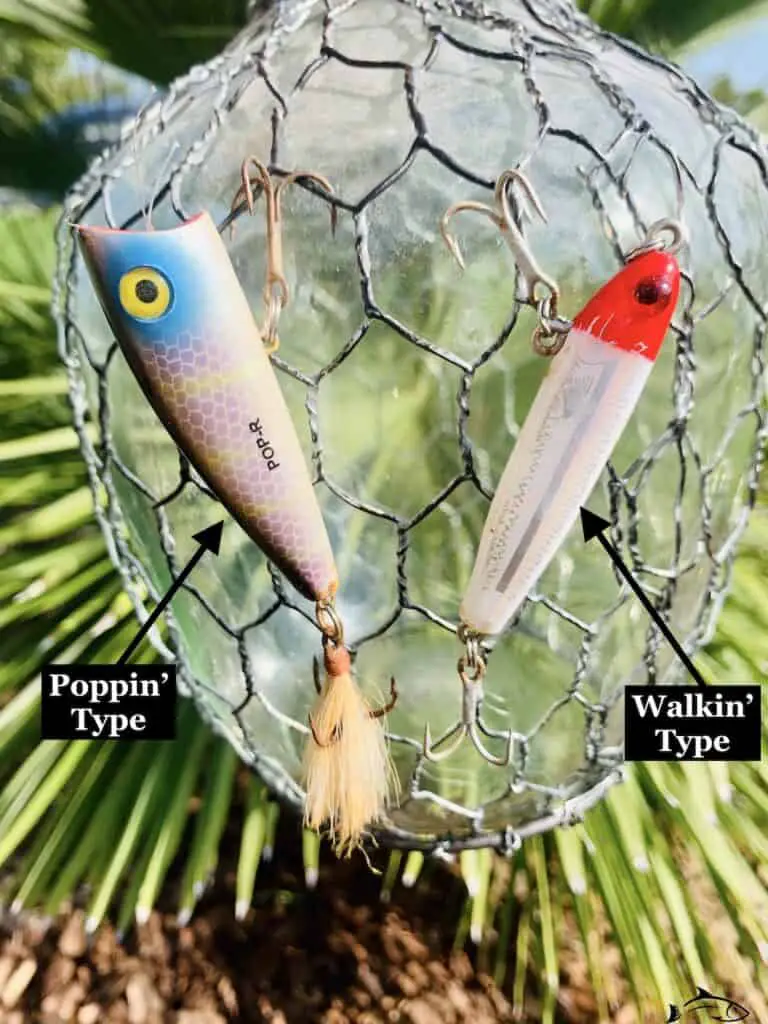
For walking style lures, you'll want to choose one with durable hardware and a nice balance for it to get right up on the top of the water quickly after a cast. The Shimano Coltsniper actually has a heavier tail section to let the lure sink a bit when you pause as you retrieve. Using a pump, reel, pump, reel rhythm during a retrieve, you'll see the “walk the dog” action. Be sure to pump the slack, not a tight line. We like the lures that also have an internal rattle to combine an enticing sound with an action which imitates an injured fish.
Here are the 3 best saltwater topwater walking style lures:
- Rapala Skitter Walk in Bone
- Shimano Coltsniper Splash Walk in Squid
- Heddon Zara Spook Lures in Finish Shad
- The Heddon Zara Spook also made it on our list of Best Bait for Surf Fishing
Prop style topwater lures also should have saltwater hardware to use them in the surf. When choosing a propeller style lure, look for one that has large blades to displace more water, and realistic and red eyes to better mimic distressed baitfish. Ideally when you fish these, you'll twitch the rod, pause, reel in the slack, and repeat. When doing this, the lure will leave behind a large wake and topwater spray to attract the fish.
Here are the 2 best saltwater topwater propeller style lures:
- Berkley Choppo Saltwater Lure in Mullet (ICAST 2021 Best Saltwater Hard Lure Winner)
- Yo-Zuri 3DB Prop Lures in Ghost Shad (Snook love these!)
The popper style is very popular and easy to fish. To fish a popper, you'll lightly twitch the rod, pause, reel in the slack and repeat, just as you would with a prop style, but maybe a little lighter on the twitch. This will create bubble in the water to mimic fleeing baitfish. We've caught so many spanish mackarels with poppers.
Here are the 3 best saltwater topwater popping style lures:
- Rebel Pop R in Chartreuse Shad (This is actually a freshwater popper. We recommend swapping the hooks to saltwater hooks for use in the surf)
- Rapala Skitter Pop in Mullet
- Storm Rattlin Saltwater Chug Bug Lure in Metallic Blue Mullet
Swimbaits/Paddletails
There are a couple types of swimbaits–the commonly seen hard swimbait lure with joints is used in freshwater to catch large bass. But what about using swimbaits in the surf? For surf fishing, we recommend using the soft plastic style of swimbaits, also called paddletails, which has more structure to the lure up front where the hook goes, and the tail portion is flexible and moves through the water.
The best way to fish these in the surf is to find a nice spot on the beach with a trough just beyond the waves and rig the swimbait with a lead head jig. As you slowly reel it in, twitch your rod side to side, and you'll be sure to get a bite. The downside we've experienced with paddletails, is sometimes the fish will bite the tail right off. For this reason, we recommend getting a durable one, like this one Z-Man DieZel MinnowZ Swimbaits in Pearl paired with a Z-Man Redfish Eye Jigheads in red to simulate an injured fish. This is a killer combination for targeting redfish as it encourages a vertical motion up and down the water column.
Spoons
Spoons are another type of artificial lure. Within the spoon category, there are weedless and jigging spoons. Weedless spoons are designed to be used in heavy cover, without getting caught on weeds. They do this with a weedguard that should be properly positioned just above the hook point, as demonstrated in the picture below.
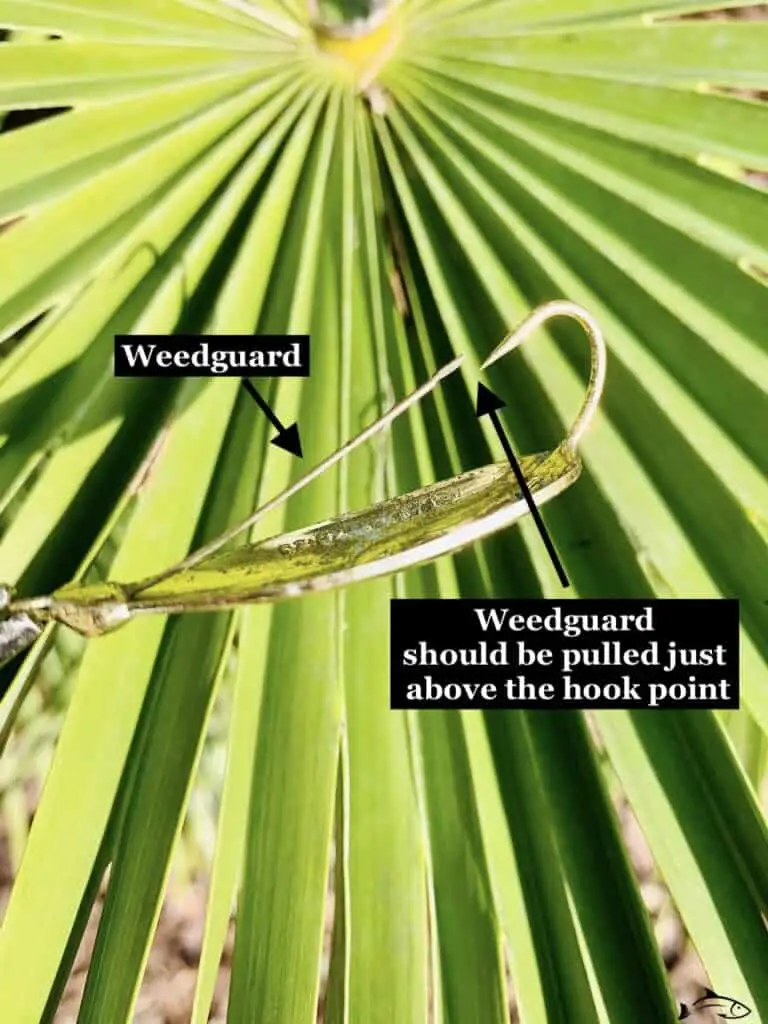
Weedless spoons have a tendency to twist your line, so anglers often wonder how can I prevent line twist when using weedless spoons? You've got to rig it properly. We recommend rigging the weedless spoon with a high quality swivel and monofilament line. As demonstrated in the video by Salt Strong, you should use mono for your main line, a high quality swivel, and then a weedless spoon. Our article on monofilament discusses the benefits of mono, including its superior performance in heavy cover applications because of the stretch and abrasion resistance.
To further improve your odds of success, consider the way you're working the weedless spoon. We see the best success if we keep it a couple feet below the surface, pull a steady retrieve, and twitch the rod at openings in the cover. The metallic spoon will flash in the sun and the distressed baitfish behavior is irresistible to all kinds of fish, especially if you're using the old school Berkley Johnson Weedless Spoon.
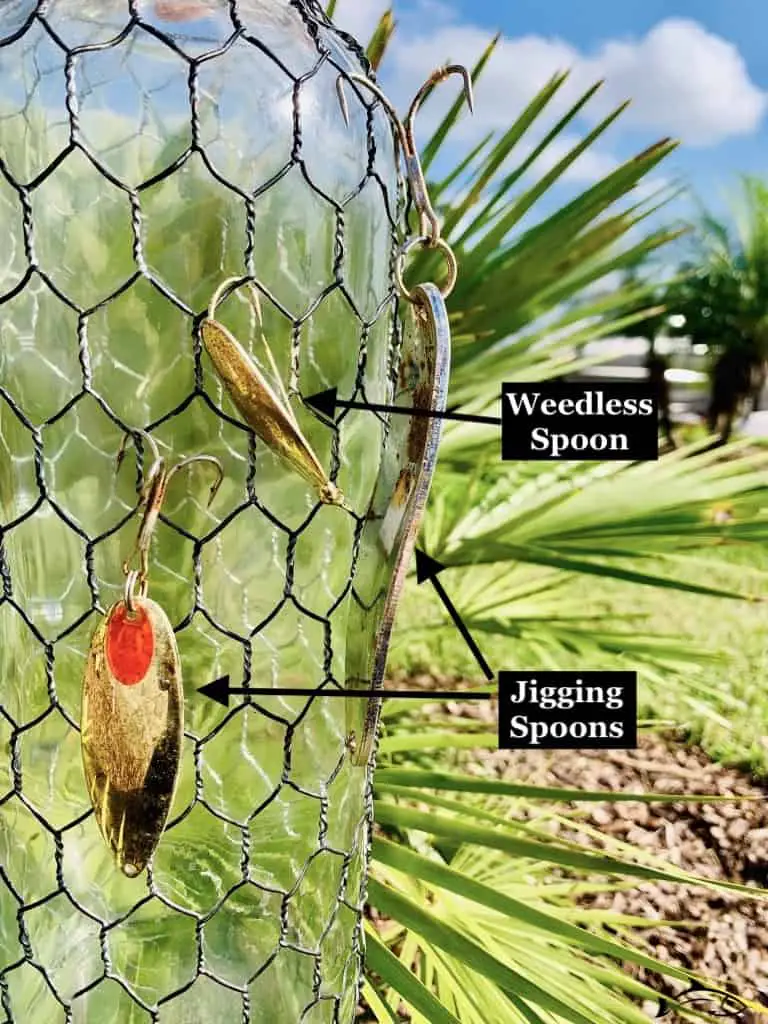
Jigging spoons are normally heavy for vertical jigging, or lighter to encourage working the lure with a hopping motion. Both options produce flash and vibration to mimic baitfish. In the image above, you can see that a jigging spoon usually has treble hook, instead of the J style on a weedless. If you prefer a J hook on your jigging spoons, read our article on J hooks to find out how to replace your treble hook with an inline J hook.
Jigging spoons come in many colors and styles, however we prefer to simplify our tackle boxes and keep it down to a few spoons, including our favorite, the ACME Kastmaster. This jigging spoon will catch fish no matter how you work it. You can go fast or slow, do a vertical jig or a steady retrieve, heavy cover or clear water, short or long cast. This lure never fails, you really can't go wrong with it.
Plugs/Crankbaits
Plugs, also known as crankbaits, attract the fish with flash and vibration. There are styles with square or round bills which are lightweight enough to rest on the surface on the pause, but the lip causes it to dive down when the rod is jerked or the line is reeled in. Square billed crankbaits are generally better for really hard cover, such as logs and twigs, whereas the round billed crankbaits are better for bouncing off a sandy or rocky bottom. There are also variations with lip length. The longer the lip length, the deeper the crankbait dives. Crankbaits are effective when you fish them with erratic action–so varying your speed, twitching and jerking your rod, etc. Our go-to crankbait is the Yo-Zuri 3D Inshore Fingerling in Ayu since we like to use it in shallow water and the dive isn't too deep.
Lipless crankbaits play up the vibration and acoustic means of attracting fish. They'll dive down and flutter on the way up the water column. They don't usually hang out around the surface, but the big fish still seem to strike them as they dive. As for the color of crankbaits, we try to match the cover, the water clarity, and the baitfish around. In clear water with silver fish, we'll go with a light colored one. In murky water with lots of logs, we'll choose a darker color pattern.
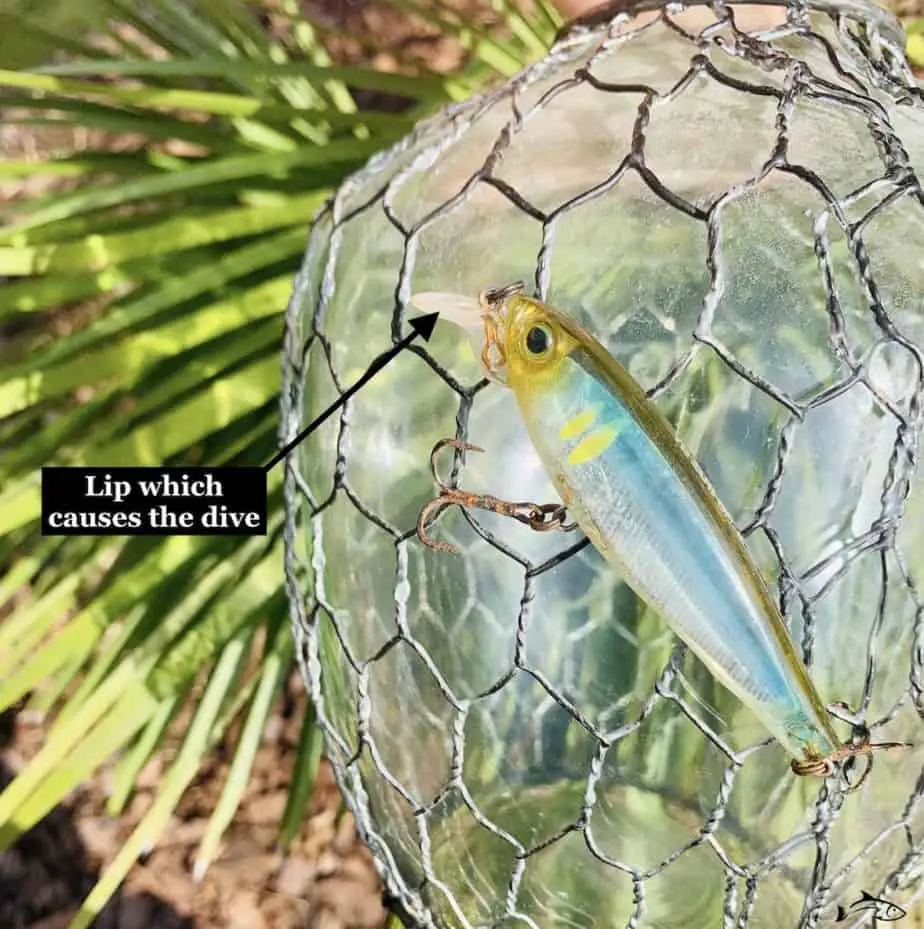
Twitchbaits
Now if you're looking to target snook or speckled trout with an artificial lure, twitchbaits are just the type you need. Twitchbaits are characterized by being slow sinking and wide twitching. The MirrOlure Catch 2000 is a twitchbait which also contains a rattle to further entice snook, speckled trout, and redfish. The red eyes are a realistic representation of an injured baitfish. It darts side to side, rattles, and stays at the right depth. MirrOlure has a long history of manufacturing well-designed lures, and this one is no exception.
Yo-Zuri 3D Inshore Twitchbait Lure is a great one for fishing the troughs near the beach. You'll notice we recommended another product from the Yo-Zuri 3D Inshore line earlier in the Crankbaits section. Yo-Zuri has some of the flashiest color patterns, so we always keep a few of their lures in the tacklebox. Twitchbaits are great if you're trying to stay above the bottom since their design is just right with the weight and buoyancy to keep it suspended. These twitchbaits are fished just like topwater lures, with the same walk-the-dog action, but this time the lure will be underwater (hence the word “suspending”).
Imitation Crab & Shrimp
Artificial crab (not to be confused with imitation Krab you might see on a sushi menu), is yet another artificial bait that's critical to have in your tackle box. Imitation sand fleas, like the Berkley Gulp! Saltwater Sand Flea/Crab – 1 Inch, are great for targeting pompano in the surf. This particular one includes a scent so you can further entice the fish. You'd action it by dragging it along the bottom with periodic jerks to imitate the sand flea coming up out of the sand. I have the best success with the natural color since it closely mimics the sand fleas we see here in Melbourne, FL. We prefer to have real sand fleas, but sometimes it doesn't work out.
We also keep the DOA Softshell Crab bait in the tacklebox as sometimes it seems red drum and other fish species are hungry for crab. This imitation crab features a hook positioned through the side of the crab so you can scurry it sideways along the bottom or let it float in the surf. This one doesn't come pre-scented, so you may want to try adding a couple drops of Pro-Cure Bait Super Gels.
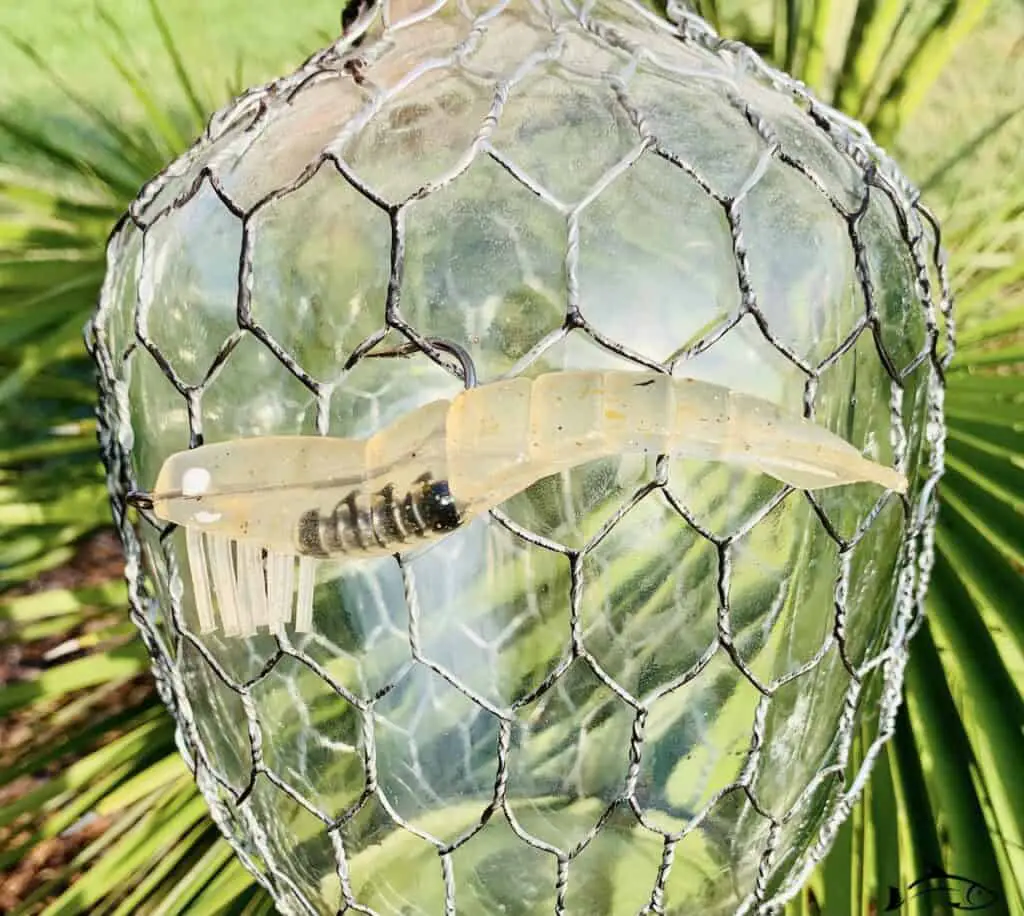
Along with imitation crab, we also keep a variety of imitation shrimps on hand. Shrimps are such a versatile bait. We love them for targeting almost any species we see on the Florida coast. Live and dead shrimp get high marks in our other article about the Best Bait for Surf Fishing.
When purchasing imitation shrimp, we like to get multiple colors. In the DOA Shrimp, we have the white one and the brownish/yellow one. White seems to work better when the water is clear and the brownish/yellow one seems to be irresistible when the water is murky. The downside about some soft plastic shrimps is that they tend to not last long. The Berkley Translucent Gulp! Shrimp is superior from a durability perspective for sure. If you're looking to buy something long-lasting, try this one.
Shrimp are slow moving critters. Keep this in mind when you're using an imitation shrimp and trying to mimic its behavior. You'll need to be slow on the retrieve and let it rise and fall naturally. A realistic presentation is usually the difference between a bite or no bite.
Jigs
Bucktail jigs used to target nearly any type of fish species from the surf. They will not sink to the bottom or float to the top. Bucktail jigs will actually swim pretty straight along through the water and will do whatever action you perform with your rod. If you twitch your rod, they'll do a twitching motion. If you jerk your rod up and relax with slack, they'll jump up and fall. They're a very versatile rig that many anglers have used through the years. They also come in a variety of colors with the teaser color and the jig head color. I personally like the white teaser with the red eye white jig head so that it stands out in the water, and looks like an injured baitfish with the red eye. The SPRO Prime Bucktail Jigs are any angler's go-to bucktail jig. Choose one color and size, or carry a variety in your tackle box. You can't go wrong with these bucktail jigs.
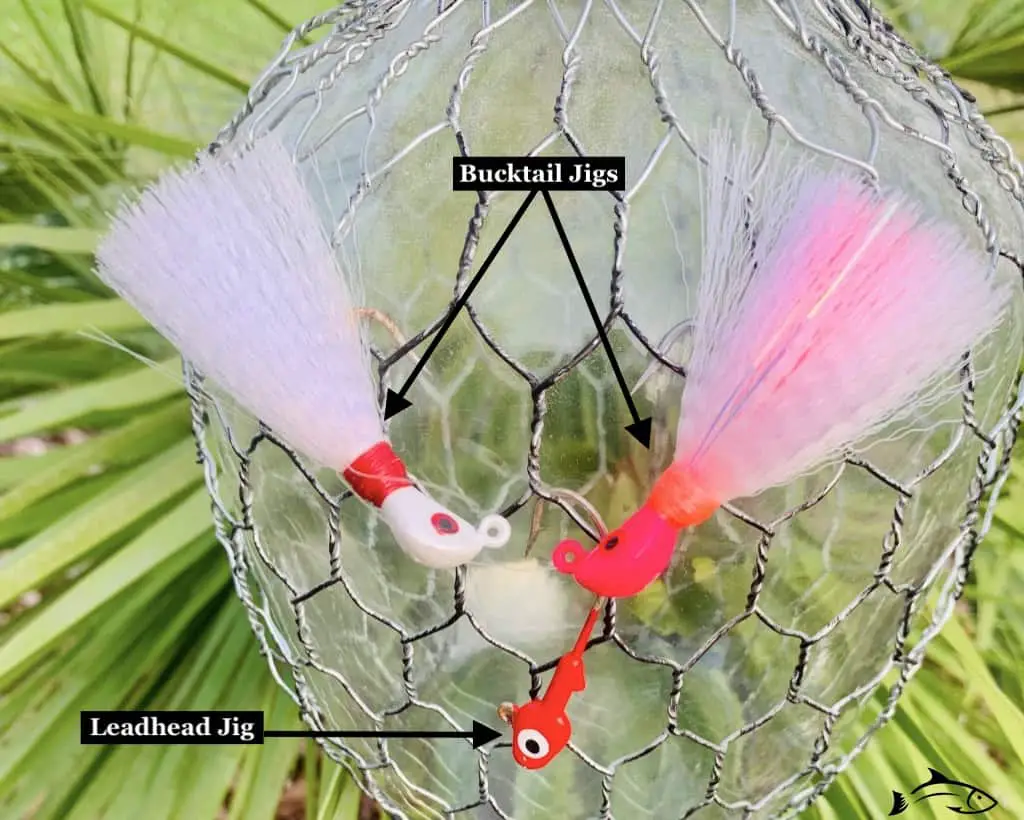
When surf fishing, sometimes you'll want to target a sheepshead. You can't beat this bottom sweeper jig for targeting sheepshead. It stays along the bottom, and as long is you add some natural or artificial bait to it, you've got what you need for catching a sheepshead, especially if you're fishing from a jetty. The design of the weight also allows it to avoid getting stuck on anything on the bottom. We normally opt for the 1 oz jig that comes with a size 2/0 hook which fits nicely in the mouth of most sheepshead. Action it by retrieving it and letting it drop on the bottom to create a sand cloud to draw attention to it.
Leadhead jigs are commonly paired with soft plastics. This gives the angler more control over how to use their soft plastics. For example, some days you may want to pair your translucent swimbait with a white leadhead jig with black eyes, and if they aren't biting, you can swap it out for a Redfish Eye Jighead. Sometimes fishing is about trying something different when you're first approach isn't working.
If you enjoyed this article, watch out YouTube video on the same subject, here. Tight lines, y'all!

